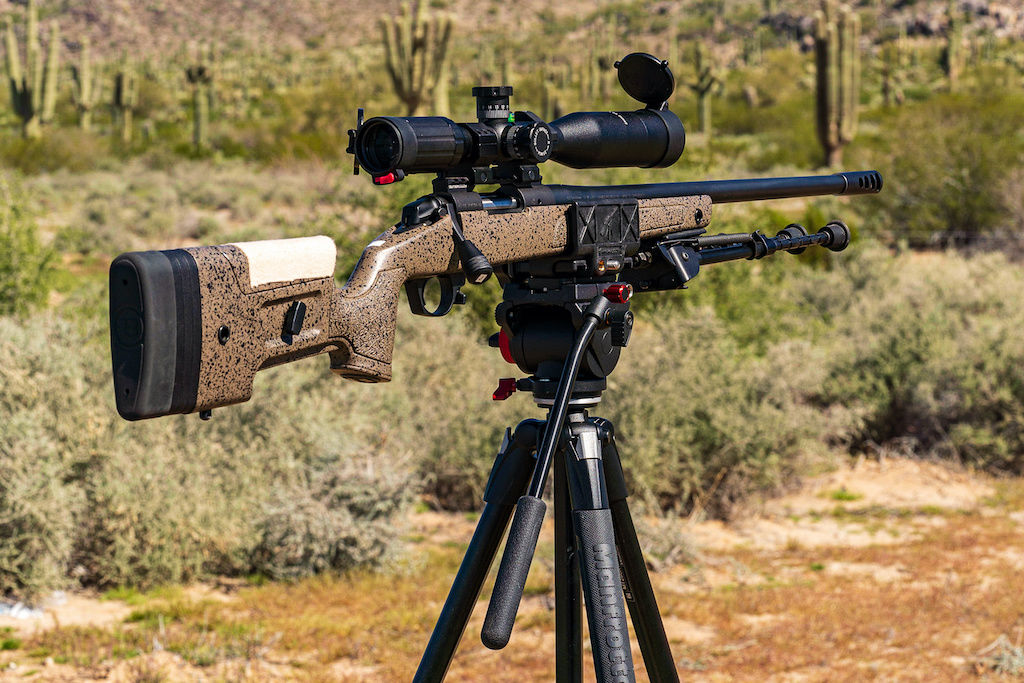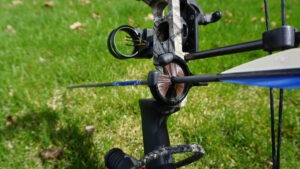September is a fantastic time of year to go fishing in Alaska. The weather is generally mild, the fish are abundant, and the scenery is breathtaking. In this article, we will explore the best fishing spots in Alaska in September, as well as provide some essential gear and tips to make your fishing trip a success.
Understanding Alaska’s Fishing Seasons
Before we dive into the best fishing spots, it’s important to understand Alaska’s fishing seasons. Each month offers different opportunities for various species of fish. In September, the fishing season is still in full swing, and anglers can expect to catch a wide variety of fish.
The Role of Weather in September Fishing
The weather in September is typically mild, with cool temperatures and occasional rain. However, it’s crucial to keep an eye on the weather forecast before heading out on your fishing trip. Strong winds and storms can make fishing challenging and dangerous. Be sure to check the forecast and plan your trip accordingly.
September is a transitional month in Alaska, where summer slowly gives way to autumn. The changing colors of the foliage create a picturesque backdrop for anglers as they cast their lines into the pristine waters. The cool temperatures provide a refreshing atmosphere, and the occasional rain showers add a touch of drama to the fishing experience.
As the days grow shorter, the fish become more active in their feeding patterns. September marks the time when many fish species start preparing for their annual migration or spawning. This natural instinct drives them to feed voraciously, making it an opportune time for anglers to target these fish.
Species Availability in September
September is an excellent time to catch a variety of fish species in Alaska. Some of the most sought-after species include salmon, trout, halibut, and grayling. Depending on the location, you may also encounter pike, whitefish, and Dolly Varden. Make sure to research the specific species available in the area you plan to fish.
The salmon run is a highlight of September fishing in Alaska. Five species of Pacific salmon – Chinook, coho, sockeye, pink, and chum – make their way up the rivers and streams to spawn. Anglers can witness the incredible spectacle of these powerful fish leaping and battling against the current. The opportunity to catch a trophy-sized salmon is a dream come true for many fishermen.
Trout fishing in September is equally exciting. Rainbow trout, Dolly Varden, and Arctic grayling are abundant in many Alaskan rivers and lakes. These fish offer a thrilling challenge to anglers, with their acrobatic jumps and strong fights. The crystal-clear waters provide a perfect setting for fly fishing enthusiasts to showcase their skills.
Halibut fishing is another popular activity in September. These massive flatfish can weigh up to hundreds of pounds, providing an exhilarating battle for anglers. The coastal waters of Alaska are known for their abundance of halibut, and September offers a prime opportunity to target these prized fish.
While targeting specific species, anglers may also encounter other fish such as pike, whitefish, and Dolly Varden. These fish add variety to the fishing experience and can provide unexpected surprises for those exploring Alaska’s waters.
Top Fishing Locations in Alaska
When it comes to fishing, Alaska is a paradise with countless fishing spots to choose from. Here are some top locations to consider:
Coastal Fishing Spots
Alaska’s coastal areas offer some of the best fishing opportunities in the state. Locations such as Homer, Seward, and Sitka are known for their abundant salmon runs. Anglers can also target halibut in these coastal waters. The breathtaking scenery and the chance to catch trophy fish make coastal fishing spots a favorite among anglers.
Homer, located on the Kenai Peninsula, is often referred to as the “Halibut Fishing Capital of the World.” Its proximity to the Gulf of Alaska and Kachemak Bay provides anglers with access to an abundance of halibut. The city is also known for its annual Homer Halibut Derby, where participants compete for the largest catch.
Seward, situated on the shores of Resurrection Bay, offers excellent salmon fishing opportunities. The bay is home to various species of salmon, including king salmon, silver salmon, and pink salmon. Anglers can enjoy both shore fishing and charter boat excursions to target these prized fish.
Sitka, located on Baranof Island, is famous for its salmon runs. The city is surrounded by pristine waters, making it an ideal destination for both freshwater and saltwater fishing. Anglers can target salmon, halibut, and other species while enjoying the stunning coastal scenery.
River and Lake Fishing Spots
If you prefer freshwater fishing, Alaska’s rivers and lakes will not disappoint. The Kenai River is famous for its salmon runs, particularly the world-renowned Kenai River King Salmon. Anglers from around the world flock to this river to experience the thrill of hooking into these massive fish. The Kenai River is also known for its scenic beauty, with its turquoise waters winding through the picturesque Kenai Peninsula.
The Russian River, located on the Kenai Peninsula, is another popular fishing spot. It is known for its sockeye salmon runs, attracting both anglers and bears during the peak fishing season. The river offers a unique fishing experience, as anglers can witness the incredible sight of bears feasting on salmon just a few feet away.
The Deshka River, located north of Anchorage, is a popular destination for salmon fishing. It is known for its strong runs of king salmon, silver salmon, and chum salmon. Anglers can enjoy fishing from the riverbanks or opt for a guided fishing trip to explore the river’s hidden gems.
The Copper River, located in south-central Alaska, is famous for its wild salmon runs. It is particularly known for its prized Copper River red salmon, which are highly sought after for their rich flavor and firm texture. Anglers can test their skills against these powerful fish while surrounded by the breathtaking Alaskan wilderness.
For lake fishing, Alaska offers numerous options. Kenai Lake, located on the Kenai Peninsula, is a popular destination for trout fishing. The lake is home to rainbow trout, lake trout, and Dolly Varden, providing anglers with a variety of fishing opportunities. Quartz Lake, located near Delta Junction, is known for its trophy-sized Arctic grayling, attracting fly fishing enthusiasts from far and wide. Eklutna Lake, located just north of Anchorage, offers both fishing and recreational activities, with opportunities to catch salmon, trout, and char.
Essential Gear for September Fishing in Alaska
Before embarking on your fishing adventure, it’s crucial to have the right gear. Here are some essentials:
Clothing and Personal Items
Layered clothing is essential for September fishing in Alaska. The weather can change quickly, so be prepared for varying temperatures. In the early mornings and evenings, it can get quite chilly, so pack some warm base layers, fleece jackets, and waterproof outer layers. During the day, when the sun is out, it can get surprisingly warm, so having the option to remove layers is important. Don’t forget to bring rain gear, as rain showers are common in Alaska. A sturdy rain jacket and waterproof pants will keep you dry and comfortable.
Alaska is known for its abundance of mosquitoes and other biting insects, so be sure to pack insect repellent. Mosquitoes can be particularly bothersome near bodies of water, so having a strong repellent with DEET is recommended. Additionally, bring a hat and sunglasses to protect your face and eyes from the sun’s glare. Don’t forget to apply sunscreen regularly to protect your skin from harmful UV rays.
When heading out for a fishing trip, it’s always a good idea to have a first aid kit on hand. Minor injuries can happen, and having basic medical supplies can make a big difference. Include items such as band-aids, antiseptic wipes, pain relievers, and any necessary prescription medications. It’s also important to stay hydrated, so make sure to bring plenty of drinking water and a reusable water bottle.
Fishing Equipment
Make sure to bring the appropriate fishing equipment for the species you plan to target. For salmon and trout, spinning or fly fishing gear is commonly used. If you’re new to fly fishing, September is a great time to try it out, as the rivers are teeming with salmon returning to spawn. Consider bringing a lightweight fly rod and a selection of flies that mimic the local baitfish and insects.
If you’re targeting halibut, you’ll need heavier gear and sturdy rods. Halibut are known for their size and strength, so a heavy-duty rod and reel combo is necessary to handle these powerful fish. Make sure to pack extra lines, hooks, weights, and any other tackle you may need. It’s always better to be overprepared than underprepared when it comes to fishing gear.
Don’t forget about the importance of proper fish handling and releasing techniques. Bringing a landing net and a rubberized landing mat can help protect the fish and ensure a safe release. It’s also a good idea to have a fish measuring tape or ruler to quickly measure your catch and determine if it meets the legal size limit for keeping.
Lastly, don’t underestimate the value of a good fishing guide or charter service. They have extensive knowledge of the local waters, fishing spots, and regulations. They can provide valuable insights and increase your chances of having a successful fishing trip. Consider booking a guided fishing tour to make the most of your time in Alaska.
Fishing Regulations and Licenses in Alaska
Before you start fishing in Alaska, it’s essential to understand the fishing regulations and obtain the appropriate licenses.
Understanding Alaska’s Fishing Regulations
Alaska has specific fishing regulations in place to protect fish populations and ensure sustainable fishing. These regulations dictate catch limits, size restrictions, and fishing methods. It’s crucial to familiarize yourself with the regulations for the area you plan to fish. You can find detailed information on the Alaska Department of Fish and Game’s website.
How to Obtain a Fishing License
To fish in Alaska, you’ll need a valid fishing license. Licenses can be purchased online, at various retailers, or at Alaska Department of Fish and Game offices. Different licenses are available for residents and non-residents, and fees vary depending on the duration of the license and the specific fishing activities you plan to engage in.
Tips for a Successful Fishing Trip in Alaska
Now that you’re equipped with the knowledge about fishing spots, gear, and licenses, let’s dive into some tips for a successful fishing trip in Alaska:
Best Practices for Catching Fish in September
To increase your chances of catching fish, it’s essential to understand their behavior and habitat. Research the specific species you plan to target and learn about their feeding patterns and preferred fishing techniques. Local fishing guides can provide valuable insights and tips for catching fish in September.
Safety Tips for Fishing in Alaska
Alaska’s wilderness is vast and can be unforgiving. It’s crucial to prioritize safety during your fishing trip. Always let someone know your fishing plans, including your location and expected return time. Be aware of any potential hazards such as bears or unstable riverbanks. Carry bear spray, be cautious around moving water, and wear a life vest if fishing from a boat.
With the right preparation and knowledge, September fishing in Alaska can be an unforgettable experience. Explore the best fishing spots, pack your gear, and get ready to make memories that will last a lifetime.


